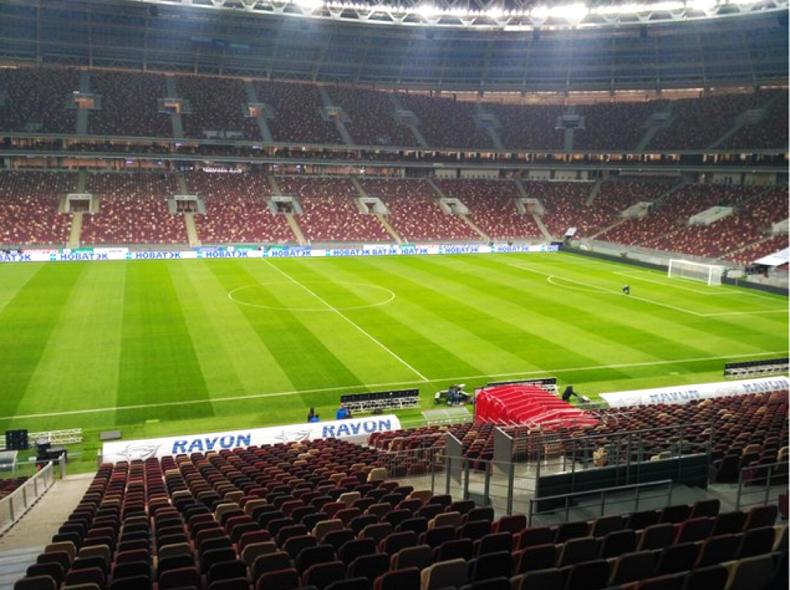Sport is the focal point of many communities and has the power to bring us together in celebration of success and in the grief of heartbreak, which is why they are created with care from the ground up.
Established by Sligoman George Mullan in 2001, SIS Pitches lists the Bernabeu stadium in Madrid, Camp Nou Barcelona, Windsor Park, Belfast and half of the 12 stadiums for this summer’s World cup in Russia among its clients.
Intensive system
SIS specialist Phil Blackwell highlights the dedication it takes to construct one of their world-class playing surfaces.
“Depending on where you are making the pitch, it can take between six weeks to five months to build it, depending on logistical problems. As we have almost 8,000m2 of turf to transport, we try to source it locally where possible to cut down on costs.
“Our pitches use an intensive system. There is a drainage layer of gravel, around 300mm deep, then a root zone of sand that is 200mm and then a thinner layer of sand and organic soil called the upper root zone on top.
“Our pitches have a distinct advantage over natural pitches; they are free-draining and can be played all year round. They are also fitted with state-of-the-art cooling and heating systems for optimum performance.”
Phil outlines the immense amount of detail that goes into preparing these pitches for use: “Sometimes it can take up to one month prior to a big game to prepare a pitch, getting our fertiliser programme in order and things like that to make sure that the pitch is in optimum condition for a game.
“The week of a game is a gradual process in getting the pitch ready and involves getting the grass mown to the right height, usually around 25mm, as well as getting irrigation and pitch mowing patterns right.”
Quick turnaround
This sort of build-up is not always necessary, as teams can play up to three games a week at different stages throughout the season, meaning a quick turnaround is vital. This is where a hybrid pitch has a distinct advantage over its natural counterpart.
“A hybrid pitch can last up to 10 years before it has to be relaid,” according to Phil – a much longer shelf life than the natural variant. It can also be partially deconstructed and stripped in stages.
Often a natural surface has to be relaid halfway through the season (as seen with Croke Park), which greatly compromises the quality of the playing surface.
After it is relaid, a natural surface is difficult to control, according to Phil, whereas a hybrid surface is a much more stable environment.
SIS’s sub-surface aeration system helps to ensure its pitches are in optimum condition. This new feature works with the drainage system to proactively manage soil moisture content and remove excess water from the soil.
It also helps to boost ventilation of the soil and to provide gas exchange in the root zone. This brings benefits throughout the year, with better temperature moderation in the root zone during the summer months, and helps with the operation of the undersoil heating system.
As the development of pitches continues to expand, SIS Pitches is helping to pave the way in the modernisation of these sacred sporting arenas. CL
If you would like more information on SIS Pitches see www.sispitches.com.
https://www.farmersjournal.ie/scots-take-aim-at-fortress-aviva-352322
https://www.farmersjournal.ie/ireland-s-ready-to-shine-in-paris-spring-342632






SHARING OPTIONS